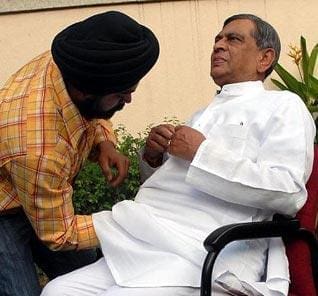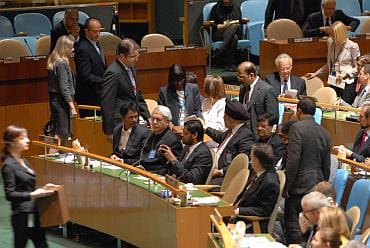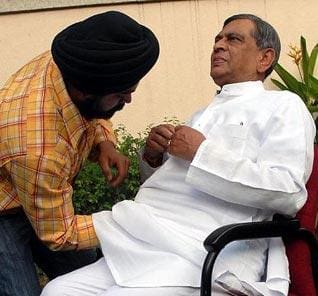
A foreign policy is to a country what social etiquette is to a civilized person. You can survive without it no doubt, but devoid of any social relations or contacts. A nation could have existed fine without a foreign policy in the past based purely on its own resources but in a world of ever-increasing international co-operation, foreign policy is the mast that supports a nation. As one of the fastest growing nations of the 21stcentury Indian foreign policy has always hogged the limelight both in the national as well as in the international spectrum. A growing part of this discussion however is, the direction Indian foreign policy is heading towards and the role of the administration and the MEA in shaping its course.

Indian foreign policy has long been ruled by a Nationalist sentiment owing to her Independence from a colonial power. As the world of the 1950’s increasingly became bi-polarized, Nehru formulated the innovative Non-Aligned Movement (NAM) to give the developing nations a common and non-polar platform to meet their goals. The NAM appeared to be quite appealing to the member nations in the beginning but not being submissive towards either pole meant a slow and sluggish development nevertheless. It was the time when people still had Swaraj and the Gandhi-an principles deeply enshrined in their hearts. By the turn of the next few decades, India’s increasing bonhomie with the Soviet Union made an abject mockery of the very objective of the NAM. It was even more ironical when one recollects that India was one of the founding members of it. Things became so intimate that the two nations even signed a friendship treaty under which either country was to implicitly help the other in times of an aggression on the other. Those were the days of the Cold War where there was no right or wrong, but only ‘whose side you’re on?’ A Soviet-leaning India meant that the US was all the more happy to help a restless Pakistan to maintain ‘regional balance’.
The Indo-Soviet affair came tumbling down with the fall of the Soviet Union in the 1990’s, something which our policy makers had never even dreamt about happening. As if to add to the shame of abandoning the NAM India now found that she was completely isolated and helpless. It was at this time that the Indian foreign policy began to shed its Nationalistic outlook to adopt a more pragmatic one. Relations with the US improved, but were still looked at with an eye of suspicion by many in the administrative circles. The Indo-US civilian nuclear deal is a new milestone in Indo-US relations. Although the deal has been signed some time back now, the controversies surrounding it have ceased to die. Maybe India is wary of embracing the US with open arms lest she finds herself repeating the mistakes of the past. The US too for its own interests is unlikely to take firm actions against Pakistan and many in India see it as a factor for not bettering the ties with it.
New ties were forged with China which was for long ignored in India’s foreign policies. Yet again India was again unable to give a definite direction to her policies. On one hand she had given shelter to thousands of Tibetan refugees by sympathising with their cause, on the other hand when it came to taking their voice to the international arena, she backed out from promoting their cause. It seemed as if India is either too doubtful of their cause or too timid to offend a powerful neighbour like China. Their indefinite stance has displeased both the sides and is also not helping India’s cause in any way. Instead of heading towards a collision course, Indian foreign policy should by now have hammered out a suitable path where both can co-exist peacefully.

It is ironical that in spite of being the largest democracy, democracy is in itself has never been a cornerstone for Indian foreign policy. This disparity has been criticized even by Barack Obama recently. India’s attitude towards her eastern neighbour Myanmar can be cited as a ready reckoner for this case. Her policy has remained indecisive in promoting democracy in Myanmar and is yet to take a firm a stand about the cause of Aung San Su Kyi. On the other hand it failed to support a democratically elected President in the Maldives when all events pointed out towards a military coup. Such incidents do not augur well for its reputation as a responsible power of South Asia. Now it is facing another situation about its stand on Iran’s growing isolation from the rest of the world.
The meandering course of Indian foreign policy would be an interesting thing to study in the coming years. It is true that its policies have become more dynamic than the past but major hiccups lie in the way. India can no longer shy away from taking a stand and must bear in mind the familiar saying of “with great power, comes great responsibilities”. She can become a deserving candidate for a permanent member of the Security Council only when she sets her fluctuating foreign policy right. Instead of appeasing all the sides involved, she needs to learn to take a stand in world policies which will serve her in the best of interests. Till that time comes, it is difficult to describe Indian foreign policy as a definite entity and not a confusing mix of principles.
| This is a Guest Post by Manish Parashar. He is a B.E. Mechanical Engineering student at the Manipal Institute of Technolgy, Manipal. |

Be the first to comment